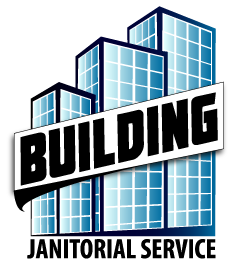Since 1984, Steve Robinson, founder of Building Janitorial Service, along with his crew, has the knowledge and experience about professional office cleaning techniques and how to professionally clean with chemicals, equipment, and supplies.
This article explains one of the techniques used by Building Janitorial Service to clean carpet: Bonnet pad cleaning. The following chemical, equipment, and supplies are used: carpet cleaner chemical, rotary standard speed buffer, attachable drive pad, cotton bonnet pad, bucket and ringer, plastic mixing pail with handle, plastic squirt trigger bottle with removable trigger, and paper towels.
Before we begin, we clear the carpeted area we are going to clean. We move light furniture and put them on the floors without carpet to be cleaned. Then we get the floor machine ready. We screw the attachable drive pad to the locking clamp underneath the head of the machine. Then we lower the stem of the machine so that the handles fit just next to our waist. Next we leave the machine and go prepare the solution.
We mix the carpet cleaner with water, according to the directions on the back of the one gallon jug of the carpet cleaner. We mix it according to its dilution ratio, with tap water, not hot. Hot water is not needed. The chemical is what does the work, not the temperature of the water.
First, we want to determine how many ounces of carpet cleaner to mix in three gallons of water. Three gallons of solution is the minimum amount of water to completely immerse the cotton bonnet pad. The back of the one gallon jug of carpet cleaner will tell us how many ounces of carpet cleaner per one gallon of water. Since we are using three gallons of water, we triple the number of ounces of carpet cleaner per one gallon of water and pour it in the bucket first. Then we pour in the three gallons of water. We next immerse the cotton bonnet pad in the mop bucket solution.
While the cotton bonnet pad is soaking in the mop bucket solution, we take the empty plastic squirt bottle and dip it into the mop bucket solution and fill it up. We screw the trigger back on to the plastic bottle and walk through the building and lightly squirt heavily soiled spots with the solution in the squirt bottle. These heavily soiled spots could be individual spills or traffic lanes. This is pre spotting, and it is designed to break down the retardants and lift them to the top of the yarn of the carpet.
After pre spotting, we go back to the mop bucket solution, ring out the cotton bonnet pad, and attach it to the attachable drive pad underneath the floor machine. When we turn on the machine, the rotary pad begins to spin. We begin moving sideways. We start at one side of the room and move toward the other side of the room, moving sideways, cleaning the carpet. Before we get to the end of the carpet moving sideways, we slow the speed of the machine down. The machine is slowed down by our hand grip. When we are at the end of the carpet we are cleaning, we push the machine forward and begin cleaning carpet not already cleaned, moving sideways, back to the opposite side of the room.
After an area approximately 10 feet by 5 feet has been cleaned, we turn the machine off, take off the cotton bonnet pad, turn it over, and attach it back to the drive pad underneath the machine. We turn the machine back on and continue cleaning the carpet until the second 10 feet by 5 feet area has been cleaned. After the second 10 feet by 5 feet area of carpet has been cleaned, we stop the machine, remove the bonnet pad, put it in the mop bucket solution, ring it out completely, then place it back under the machine, and start cleaning again. We repeat all the steps above until finished.
If you are interested in additional information about professional cleaning techniques, how to professional clean with chemicals, equipment, and supplies, and other published articles by Building Janitorial Service, please subscribe to our feed.
